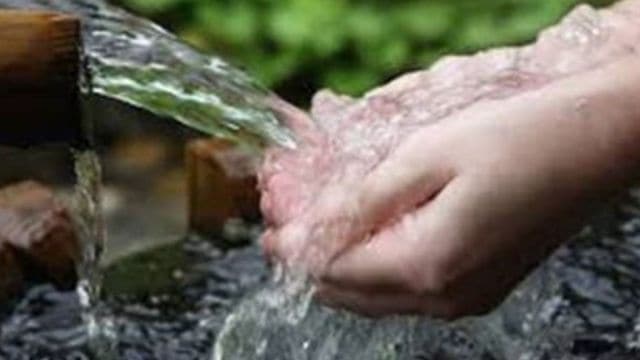Click here to join Express Pune WhatsApp channel and get a curated list of our stories
EXPRESS INTERVIEW I Why there is an urgent need for protecting natural groundwater sources
The Indian Express speaks with Prof Himanshu Kulkarni, founder trustee and secretary of ACWADAM, who recently became the first Indian to be awarded the International Water Prize for his work in groundwater governance and community-led groundwater management.
 The idea of using the science of hydrogeology in a participatory way, to understand aquifers and support community action in groundwater management, became the foundation of ACWADAM’s work and continues to guide its efforts today.
The idea of using the science of hydrogeology in a participatory way, to understand aquifers and support community action in groundwater management, became the foundation of ACWADAM’s work and continues to guide its efforts today.Geologists from Savitribai Phule Pune University (SPPU) set up the Advanced Center for Water Resources Development and Management (ACWADAM) in 1998, driven by the idea that research should go beyond academic lecture halls. The aim was to design education and research programmes on groundwater that could help communities and organisations make informed decisions about managing this vital resource. The idea of using the science of hydrogeology in a participatory way, to understand aquifers and support community action in groundwater management, became the foundation of ACWADAM’s work and continues to guide its efforts today.
A month ago, Prof Himanshu Kulkarni, founder trustee and secretary, ACWADAM, became the first Indian to be awarded the 2025 International Water Prize for his work in groundwater governance and community-led groundwater management. In an interview with The Indian Express, Prof Kulkarni explained ACWADAM’s work and why participatory groundwater management offers a framework for developing sustainable responses to climate and human impacts, involving local communities, policymakers, researchers and other stakeholders. Excerpts:
Q. Your work with ACWADAM has primarily revolved around aquifer-based participatory groundwater management. Could you tell us more about it?
Himanshu Kulkarni: ACWADAM’s work on communication with communities on the singular topic of collectively managing aquifers has evolved significantly. This is not just from our own field experiences but from those of many other organisations. An aquifer is a saturated zone of sediment or rock that can yield water in quantities sufficient for practical use through wells and springs. Community resource persons help not only in generating local knowledge on aquifers, but also in suggesting various methods of communicating the same for collective decision-making and action.
Q. What process did you follow to explain the importance of groundwater to the community when they could not visualise and see these aquifers operating under the ground?
Kulkarni: The process can be broadly broken down into the following steps – (1) A local-level mapping and characterisation of aquifers to gauge their extent, capacity to store and transmit water and the quality of groundwater, followed by demystified processes of communicating complex results into simple messages; (2) Developing audio-visual communication tools for dialogue with communities for collective decision making on what we call ‘protocols’ of groundwater management; (3) The community finally decides what is ‘acceptable’ to the group as a whole. Hence, the feedback from experiences across India also feeds into the ever-evolving process of such communication. We also ensure strategies for communicating this collective knowledge and wisdom, based on the location, situation, and socio-economic conditions. This is especially relevant, given the highly diverse socio-ecological conditions that prevail in different parts.
Q. How is springshed management different from aquifer management?
Kulkarni: Understanding aquifers is integrated into understanding how ‘springsheds’ operate. A springshed is an integrated system of watersheds, the underlying aquifers and the larger landscape in which a system of springs occurs in an area or region. Springshed management, therefore, integrates managing landscapes that include watersheds and the underlying aquifers. It also considers learning from communities that have depended on spring water for centuries.
Q. So, which is more crucial to address right now when we are facing unpredictable rainfall and the weather patterns are disturbed?
Kulkarni: Spring water, like the other components of catchment water – streams, rivers and the glacial and permafrost systems in higher altitudes – have become vulnerable to both natural (climate and climate-related events) and anthropogenic fluxes (like deforestation, over extraction of groundwater). Protecting and conserving springs as natural groundwater sources that support life, livelihoods, and ecosystems must become a priority under such circumstances. Springshed management provides a template on which sustainable responses to climate and human fluxes can be provided through participation by local communities and a variety of stakeholders, including policymakers and researchers.
Click here to join Express Pune WhatsApp channel and get a curated list of our stories








